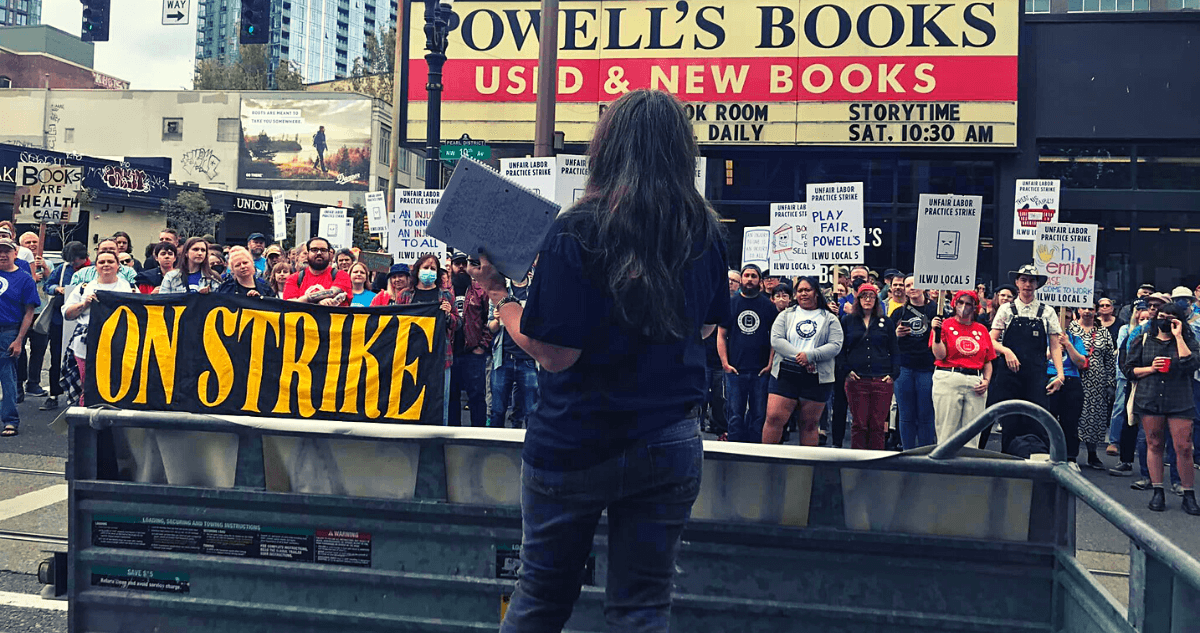Oregon continues to enjoy one of the nation’s strongest economies. Whether measured by economic growth or the growth of worker productivity, Oregon’s economy is a top performer.
Oregon’s challenge is not how to make the economy grow faster, but how to make the economy work for everyone. Too many Oregonians, including working Oregonians, continue to struggle just to get by.
While there is no shortage of ideas about policies that would promote shared prosperity, there are several steps that Oregon lawmakers can take now to increase the odds that low- and moderate-income Oregonians will share in the economy they have helped build. These include significantly increasing Oregon’s minimum wage, protecting workers against employers who steal wages and enacting a Basic Health Program that will provide affordable, quality health care to low-income Oregonians who earn too much to qualify for Medicaid.
Download a copy of this fact sheet:
Oregon’s Fast-Growing Economy Leaves Many Workers Behind (PDF)
Related materials:
See the series A View of the State of Working Oregon
Oregon’s economy has excelled since 1997, the beginning of the official data series on economic growth.[1]
Oregon’s inflation-adjusted gross state product (GSP) increased from $113 billion in 1997 to $204 billion in 2014.
Despite two recessions, Oregon’s economy has grown by about 81 percent over the better part of the last two decades.
Oregon’s economy has grown far faster than the national economy.
From 2001 to 2014, the national economy expanded by 24 percent after adjusting for inflation. The year 2001 marked the beginning of a new economic expansion.
Over that same time, Oregon’s economy grew by 57 percent, nearly two and a half times the national rate.
Compared to other states, Oregon’s economy performs quite well.
From 2001 to 2014, Oregon’s economy ranked second among all states and the District of Columbia in terms of economic growth.
Only North Dakota — which experienced an oil boom — saw higher growth over that time period.
Population changes can impact economic growth, so it is important to look at growth on a per person (per capita) basis.[2] Adjusted for population changes, Oregon’s economy also excels.
From 2001 to 2014, Oregon’s per capita economic growth ranked second among all states and the District of Columbia.
Oregon’s economy grew 37 percent on a per capita basis from 2001 to 2014, more than three times the national rate over the same time period.
Oregon’s economic growth can be explained in part by the fact that working Oregonians have been more productive.
In 2001, the average Oregon worker produced about $62,400 in goods and services after adjusting for inflation. By 2014, the average worker was producing more than $88,200 in goods and services.
From 2001 to 2014, only North Dakota saw a larger increase in worker productivity.
Oregon’s economy has become more important to the national economy over the better part of the last two decades.
In 1997, the Oregon economy made up just 1.0 percent of the national economy after adjusting for inflation.
Over the next seventeen years, Oregon’s share of the national economy grew by nearly a third.
By 2014, Oregon’s share of the national economy was about 1.3 percent after adjusting for inflation.
The economic recovery since the end of the Great Recession has varied across the state.
Since 2009, Portland’s economy has expanded by 16.5 percent.
The economies of Bend, Eugene, Albany, Medford, and Grants Pass have also grown, albeit more slowly.
Meanwhile, the economies of Salem and Corvallis have contracted, driven in part by declines in manufacturing and real estate.
Lawmakers Have an Opportunity to Make the Economy Work Better for Everyone
Oregon’s stellar economic growth, unfortunately, has bypassed many Oregonians who have helped create those economic gains. Consider, for example:
- The share of families in Oregon who live in poverty despite the fact that they have at least one parent who works has grown since 2007.[3]
- The Oregonian in the middle — the median — endured a decline in income since the end of the Great Recession. Meanwhile, the average income of the top 1 percent of earners in Oregon increased by $80,697 from 2009 to 2013.[4]
- Low-wage workers in Oregon have seen their wages decline in real terms by more than 5 percent since the end of the Great Recession. On the other hand, high-wage workers have seen slight increases in their inflation-adjusted wages over that time.[5]
Making the economy work for everyone requires changes to the rules that govern the economy — changes in public policy. In 2016, Oregon lawmakers can take decisive steps to make the economy work for more Oregonians. One of those steps is significantly raising Oregon’s minimum wage so that Oregonians working full time no longer live in poverty. Another is enacting strong protections against wage theft so that working Oregonians receive the income they earn. And yet another is creating a Basic Health Program so that low-income workers are able to afford health insurance.
These actions would allow more working Oregonians to share in the economic prosperity they helped create. All of Oregon stands to benefit when more Oregonians share in the state’s economic progress.
[1] In 1997, the official economic arbiter, the United States Bureau of Economic Analysis (BEA), discontinued a state-level data series dating back to 1963. Because the BEA began using new definitions and data sources in 1997 to measure Gross State Product (GSP), the bureau strongly cautions against combining the two data series to construct a longer series of data. Gross state product (sometimes also referred to as gross domestic product by state) is the value of all goods and services produced within a state as measured by the BEA. For more information, see John E. Broda and Robert P. Tate, Gross Domestic Product by State, Bureau of Economic Analysis, July 2015, p. 3. Unless otherwise noted, all data in this fact sheet are from OCPP analysis of BEA data.
[2] The case of Arizona illustrates why “per capita” matters. Without factoring in population growth, Arizona’s economic growth ranked above average over the 2001 to 2014 period. But if population changes are taken into account, Arizona ranked 48th over the same time period and, in fact, showed negative growth.
[3] Oregon Center for Public Policy, Poverty Despite Work: A Growing Problem in Oregon, December 16, 2015.
[4] Oregon Center for Public Policy, Oregon Income Inequality: More Than Three Decades in the Making, September 1, 2015.
[5] Oregon Center for Public Policy, Low- and Middle-Wage Workers Lose Ground During Economic Recovery, September 25, 2015.















